1. What is Manus?
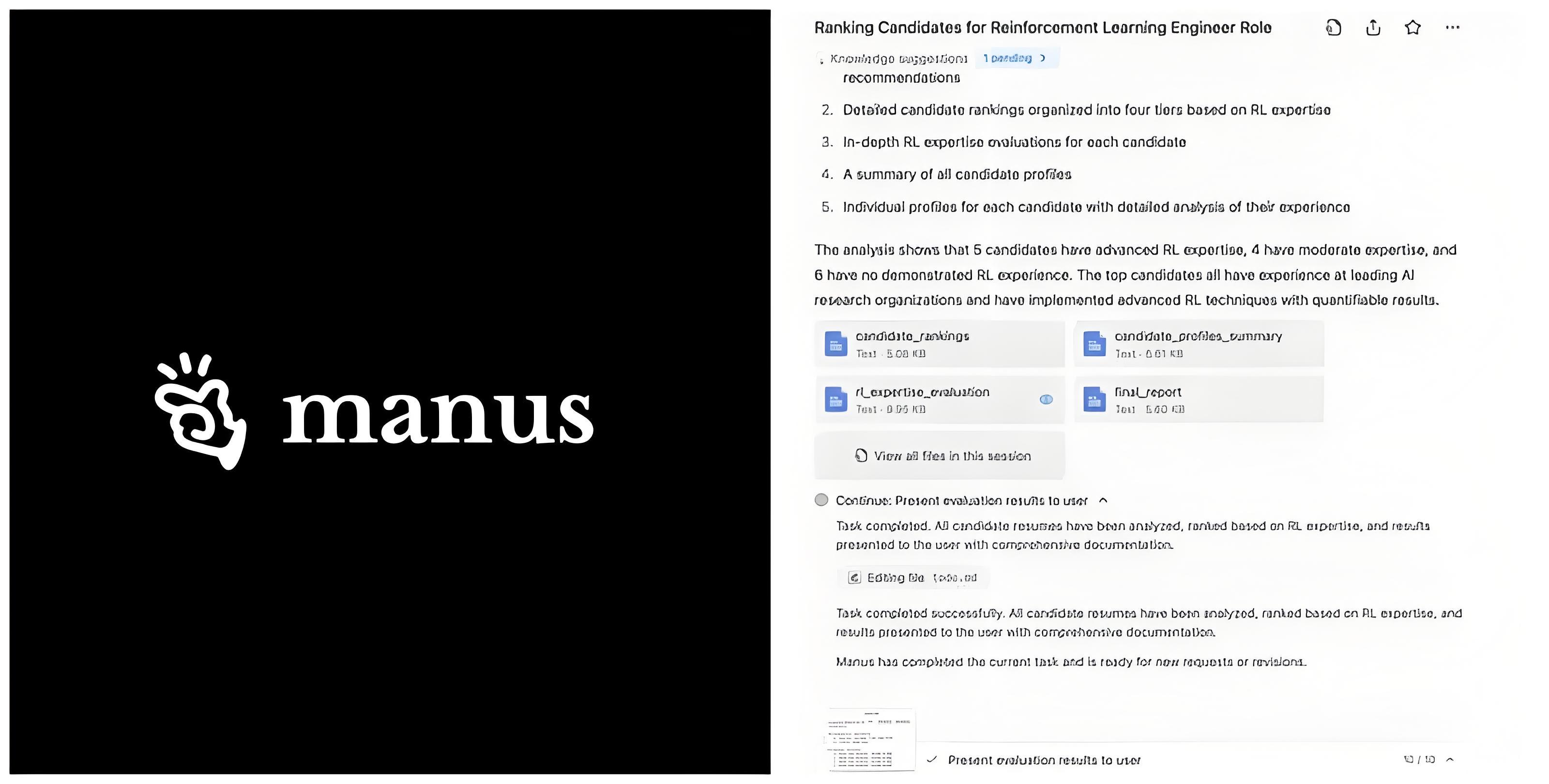
Manus AI was created by the Chinese Monica.im team. It is the world's first general-purpose AI agent that truly realizes full-link autonomous execution of tasks. The product name "Manus" comes from Latin, meaning "hand", implying that AI not only has intelligent thinking, but also has the ability to transform thinking into actual actions. As pointed out by major media reports, the launch of this product marks the qualitative change of the Chinese team from "auxiliary tools" to "executing subjects" in the global AI field. Manus has powerful tool calling capabilities and can autonomously complete the entire process from task planning to execution, such as file processing, data analysis, code writing, content creation, etc. When AI evolves from a "dialogue tool" to a "digital employee", Manus AI, the best autonomous AI agent, redefines automation and productivity. Currently, Manus is still in the internal testing stage and requires an invitation code to log in to use it.
2. Core Technology Architecture and Innovation Highlights
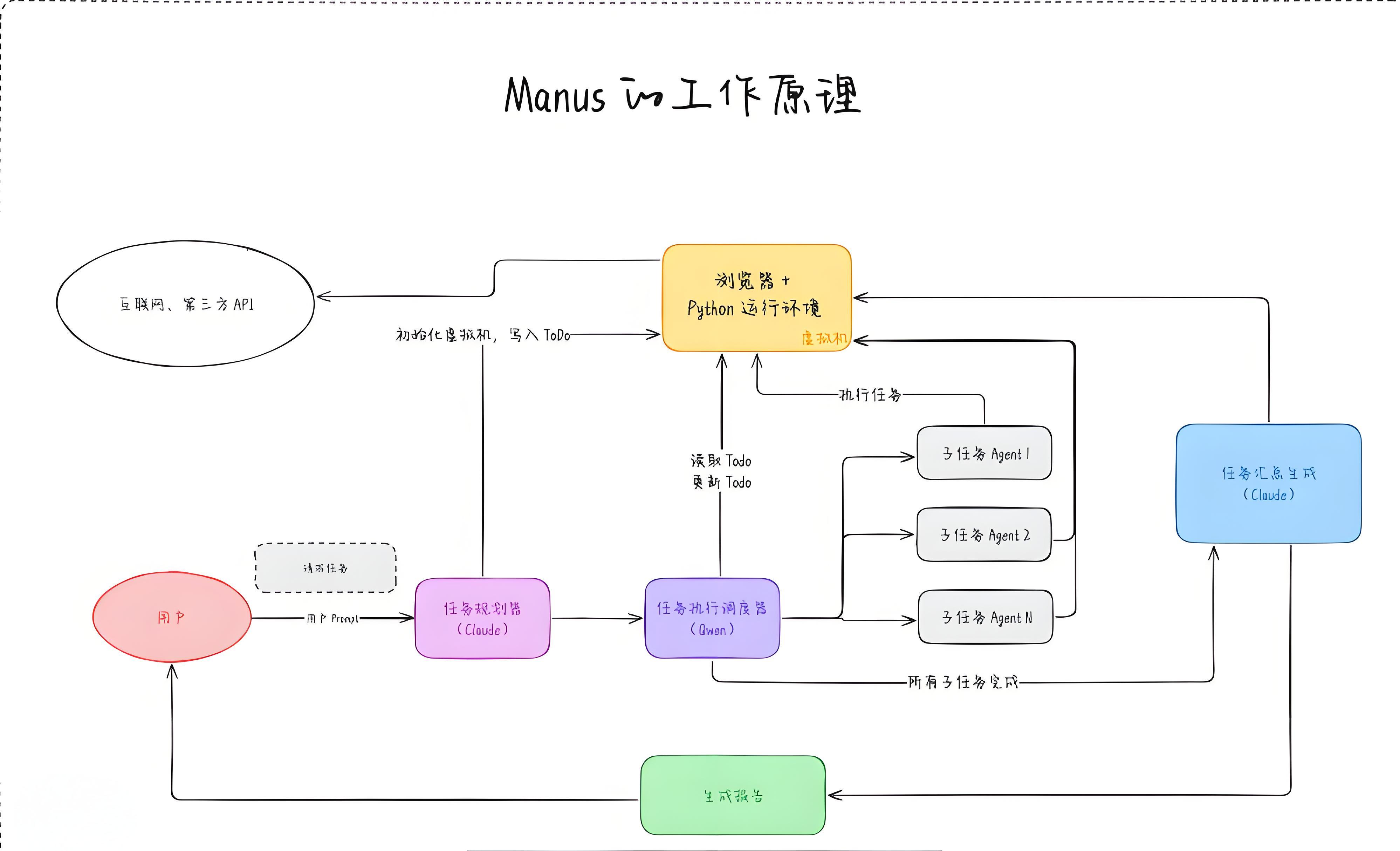
Highlight 1: Three core modules
Planning
As the "brain" of Manus, this module is responsible for accurately analyzing user needs, breaking down complex tasks into multiple actionable subtasks using advanced Monte Carlo Tree Search (MCTS) and other algorithms, and formulating detailed execution plans.
Memory
The memory module stores users’ historical interactions, preference information, and intermediate task data, which not only ensures the continuity of subsequent task execution, but also enables Manus to continuously optimize its own strategies based on user feedback.
Tool Use
Manus can automatically call a variety of external tools including web browsers, code editors, data analysis tools, and database management systems to automate the entire process from data collection, code generation to result delivery.
Highlight 2: Multi-agent collaborative architecture
Manus uses a multiple agent system to asynchronously run each subtask in a cloud virtual machine. This architecture enables it to process multiple tasks in parallel. Even if the user turns off the device, the background tasks will continue, and the complete results will be fed back to the user through notifications. In addition, multi-agent collaboration also ensures adaptive adjustments and real-time error corrections during task execution, making the entire process closer to the way human experts work.
Highlight 3: Performance and cost advantages
In the GAIA benchmark test, Manus reached a new SOTA (State-of-the-Art) level, not only surpassing OpenAI's Deep Research model in logical reasoning and tool calling efficiency, but also showing significant advantages in task accuracy and operating costs. It is reported that its single-task operating cost is about US$2, which is more cost-effective than similar products.
3. Manus practical application cases (for more information, please refer to the official website case library)
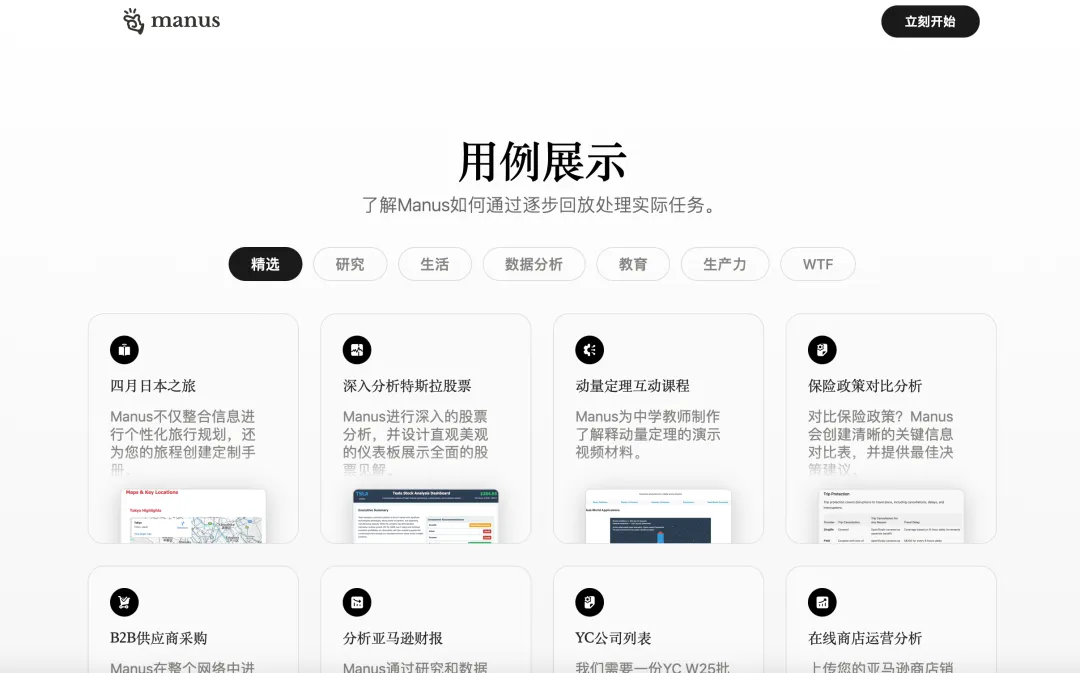
Manus's advantage is that it can use independent thinking and systematic planning to flexibly call various tools in its own virtual environment to write and execute code, intelligently browse the web, and operate various web applications. It can directly deliver complete task results to users instead of just providing suggestions or answers. Its core advantages have broad application potential in many fields, such as:
Business process automation
From automatically generating market research reports to batch processing documents, Manus can help companies significantly reduce manual operations and improve work efficiency and data accuracy.
Data Analysis and Visualization
Whether it is stock trend analysis, financial report research or e-commerce data analysis, Manus can use Python scripts and interactive charting tools to generate detailed analysis reports and provide strong data support for decision-making.
Content Creation and Education
Manus can customize interactive course content for teachers, such as teaching videos and presentations for middle school courses, and can also provide auxiliary functions such as creative writing and PPT production for content creators.
Real Estate and Recruitment
In actual cases, Manus can automatically decompress uploaded resume files, screen candidates, and generate Excel ranking reports; it can also screen communities and organize data based on the home purchase conditions provided by users to generate detailed real estate analysis reports.
4. How to apply for a Manus invitation code?
➡️Apply through the Manus official website: Visit the Manus official website: manus.im
➡️Find the "Get Started" button on the login page, then click "Apply for access" to enter the application page.
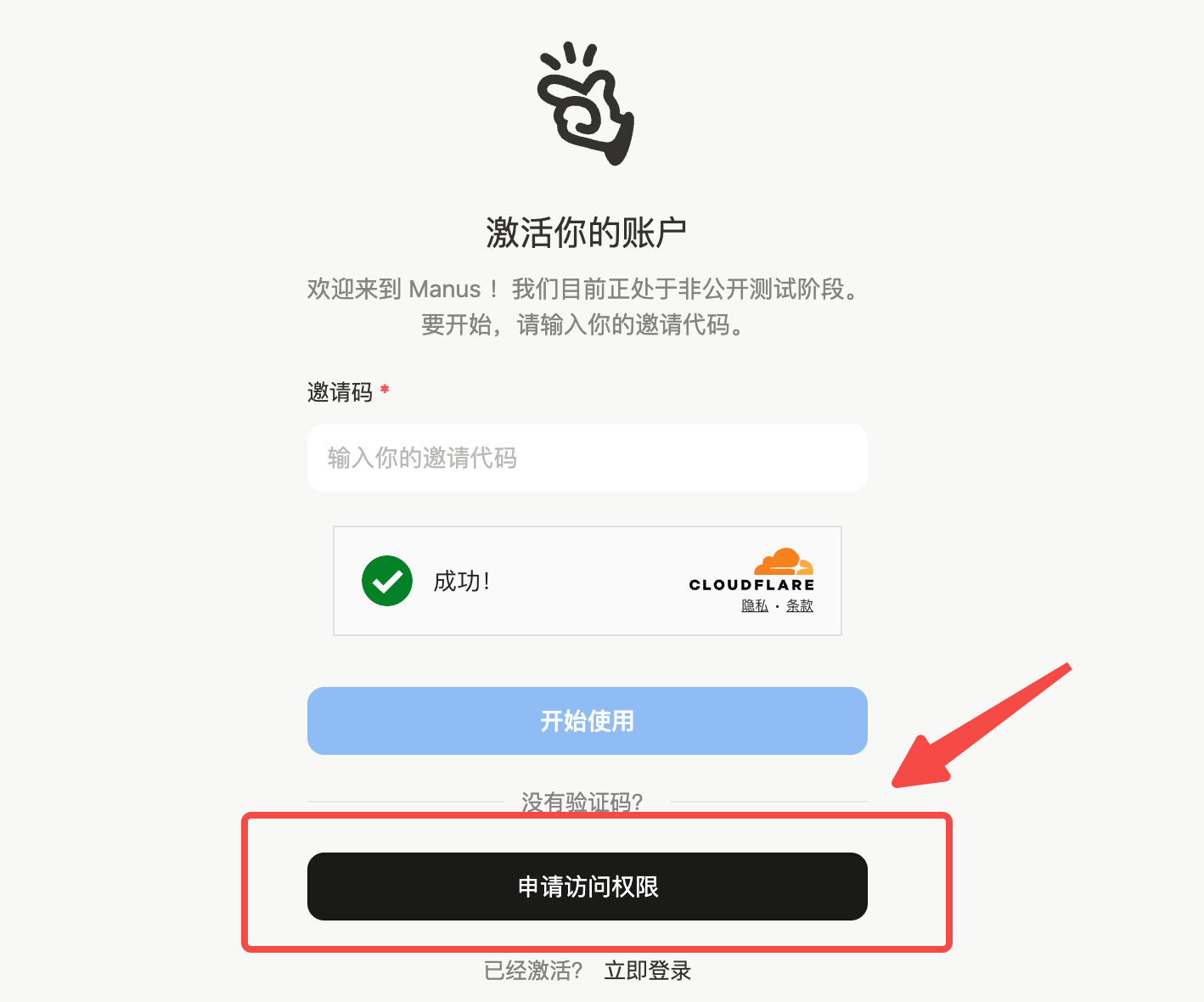
➡️Fill in your email address and a brief description of how you would like to use Manus. The more detailed the description, the faster you will get your invitation code.
➡️After successful submission, please wait patiently and pay attention to the email message.
【Application template reference】
Subject: Apply for Manus invitation code (fill in according to your occupation or needs, such as "programmer", "designer", "entrepreneur", etc.)
Body: Briefly introduce your professional background and work experience. Explain how you hope Manus can help you in your work or study. Express your expectations for Manus.
【Notes and Application Tips】
It is recommended to use Google or other external email accounts. Domestic email accounts may not be able to receive relevant verification emails and notifications normally.
The official website has never opened any channels for paid invitation codes. Anyone who claims that you can "pay to buy invitation codes" is a scammer. Do not purchase invitation codes through unofficial channels to avoid being deceived.
Please be as detailed and sincere as possible in your application reasons, highlighting your needs and usage scenarios for Manus. Due to the large number of applicants, the link may not be opened, so it is recommended to try several times.
5. Looking to the future: The potential for integration between Manus AI and Web3
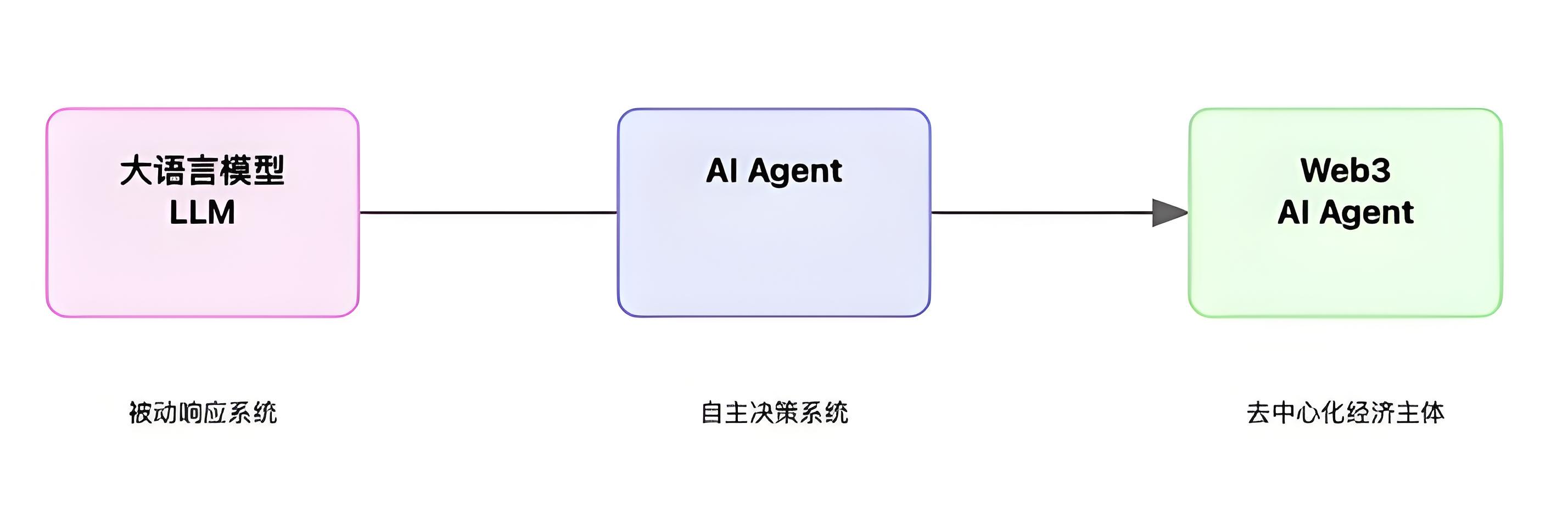
The inspiration of technical concepts to the Web3 industry
The "less structure more intelligence" concept launched by Manus AI emphasizes the use of fewer predefined rules and the realization of task decomposition and autonomous execution through intelligent means. This idea is also of reference significance in the Web3 field. In the Web3 ecosystem, many projects rely on smart contracts and decentralized protocols, but in actual business scenarios, complex decisions often require more flexible and intelligent solutions. Manus's multi-agent collaboration and automated workflow provide a technical reference for how to realize the automatic execution of complex tasks in a decentralized environment.
Multi-signature and decentralized trust
Manus uses a multi-signature (multisig) system internally to coordinate decisions between multiple models. This mechanism is similar to the multi-signature wallet commonly used in the blockchain field. The multi-signature mechanism is crucial in ensuring the atomicity and security of transactions or operations. This also inspires Web3 projects to draw on similar multi-level verification and control methods when building decentralized autonomous systems to ensure the accuracy and security of various operations.
6. Manus’s expansion of Web3 application scenarios
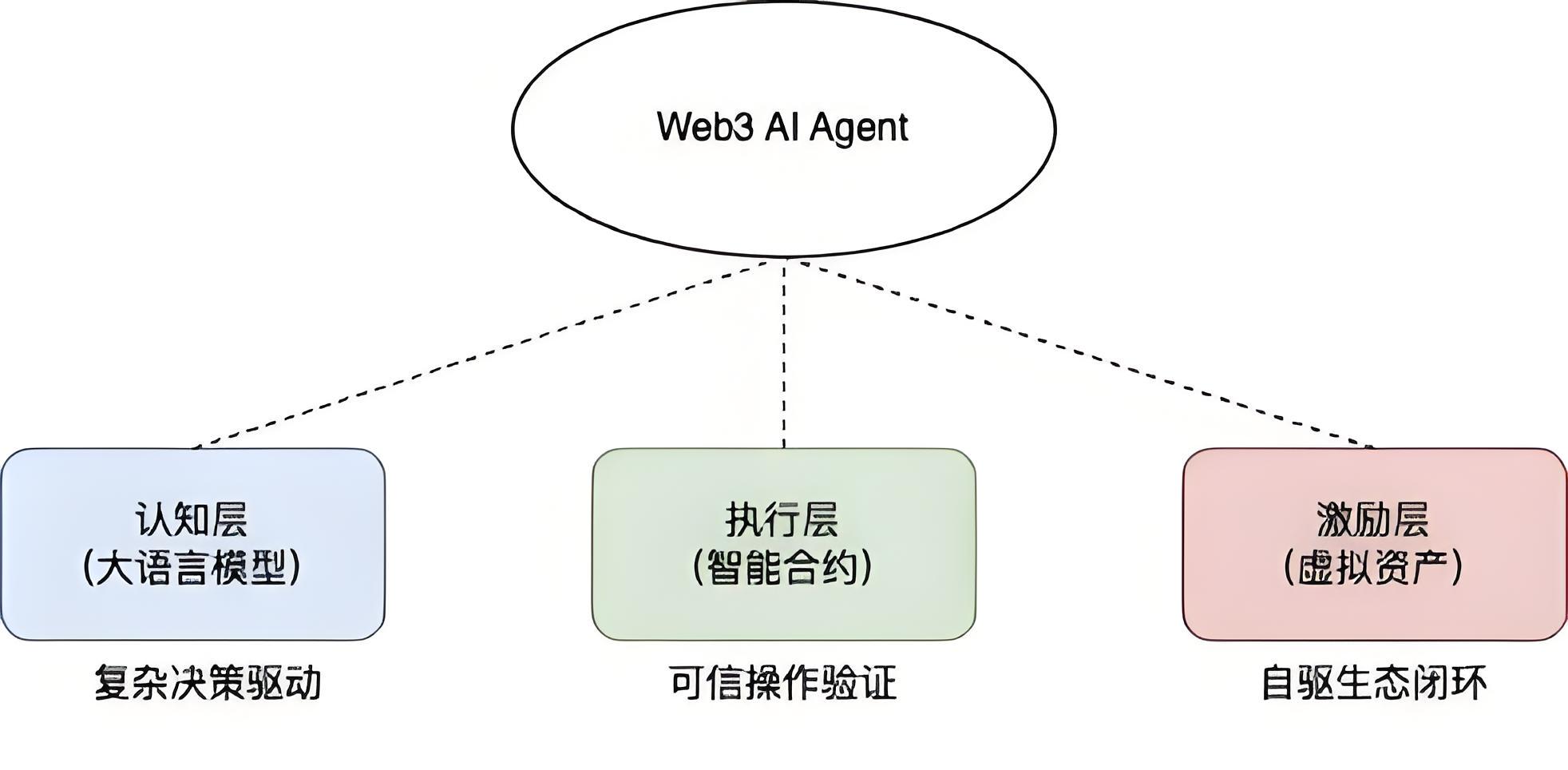
The integration of decentralized finance (DeFi) and AI
Intelligent trading decisions:
DeFi platforms in Web3 rely on automation and smart contracts to execute financial transactions. Manus AI's autonomous decision-making and task decomposition capabilities can be applied to data collection, risk assessment, and trading strategy formulation. For example, when executing complex cross-chain transactions or arbitrage operations, AI Agent can integrate on-chain data in real time, call external data sources, and automatically execute decisions, thereby improving transaction efficiency and accuracy.
Enhanced transparency and security:
By combining a multi-signature mechanism, AI Agent can ensure that each step is verified multiple times when executing financial decisions, reducing the risks caused by single point failures or wrong decisions. This is of great significance for DeFi applications in financial scenarios that require very high security and transparency.
Web3 application ecology and user experience upgrade
Automated content generation and community management:
In Web3 communities, content generation, user interaction, and community management often require a lot of manual work. Manus AI's full-link automation capabilities can be used to automatically write announcements, generate community reports, and even interact with users through intelligent agents to improve community operation efficiency and user experience.
Data integration and cross-chain collaboration:
The data decentralization and cross-chain operations of the Web3 ecosystem bring challenges to data integration. Manus AI can provide a unified view and decision-making suggestions by autonomously searching, analyzing and integrating multi-source data, providing technical support for scenarios such as cross-chain asset management and decentralized data analysis.
7. The long-term impact of Manus on the Web3 ecosystem
The emergence of Manus AI has not only sparked widespread discussion in the traditional AI field, but also provided a new direction for the Web3 industry. Its technical concepts such as autonomous execution, multi-signature control, and multi-agent collaboration are expected to promote the development of Web3 in the following aspects:
Improve the automation and security of the DeFi ecosystem:
By introducing Manus' technical solutions into the DeFi platform, a more decentralized, efficient, intelligent and secure transaction decision-making mechanism can be achieved.
Stimulate innovation in automation and intelligent management of Web3 projects:
AI Agent can automate complex tasks, provide a new model of intelligent operation and management for decentralized applications, reduce the cost of manual intervention, and improve overall efficiency.
Accelerate the deep integration of AI and Web3:
Combined with Manus's technical concepts, future Web3 projects may develop more intelligent applications with autonomous learning, real-time decision-making and multi-signature security mechanisms, bringing new ecological solutions to decentralized finance, data management and community governance.
8. Conclusion
Manus AI, with its full-link autonomous execution capability and multi-agent collaborative architecture, has broken through the "conversation-only" limitation of traditional AI assistants and has become an important force in promoting the transformation of intelligent agent technology to actual implementation. At the same time, its core concepts and technical implementations provide valuable inspiration for the Web3 industry - through intelligent agents, automatic decomposition of complex tasks, cross-chain data integration and security assurance are achieved, thereby promoting the intelligent upgrade of DeFi, community governance and decentralized application scenarios.
Although the market is still controversial about Manus's technological breakthroughs and marketing strategies, it is undeniable that the emergence of Manus marks the leap of AI from "thinking" to "action" and opens up a new path for the deep integration of the Web3 ecosystem. In the future, with the continuous maturity of technology and the continuous construction of the ecosystem, Manus and similar products will hopefully play a greater role in promoting the liberation of productivity, intelligent management, and decentralized governance of blockchain.











